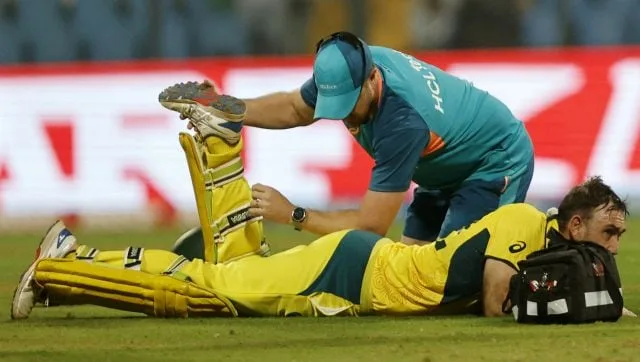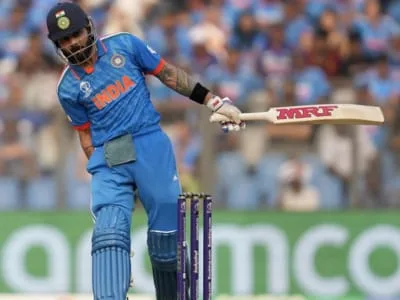Cricket, a sport celebrated for its athleticism and endurance, showcases players at the peak of physical fitness. Yet, amidst the breathtaking boundaries and acrobatic catches, there’s a phenomenon that often perplexes both fans and players alike – cramps. These seemingly innocuous muscle contractions can strike even the fittest cricketers, leaving spectators questioning how such well-conditioned athletes can succumb to this discomfort. In this exploration, we unravel the mystery behind why cricketers, despite their superlative fitness levels, are not immune to the clutches of it.

Reasons Why Cricketers get Cramps
The Rigors of Cricket: A Demanding Affair
To comprehend the cramp enigma, one must first understand the demanding nature of cricket. Unlike some sports that involve continuous movement, cricket is characterized by intermittent bursts of intense activity – sprinting between the wickets, explosive bowling spells, and dynamic fielding. This combination of sudden, high-intensity efforts followed by periods of relative inactivity can set the stage for cramps.
Dehydration: The Silent Culprit

One of the primary culprits behind it in cricket is dehydration. Despite meticulous hydration plans, the duration of a cricket match, often spanning several hours, exposes players to significant fluid loss through sweat. Dehydration can result in an electrolyte imbalance, particularly a decrease in sodium and potassium levels, which are vital for muscle function. As the body loses these electrolytes, muscles become more prone to involuntary contractions, leading to cramps.
Overuse and Fatigue: Pushing the Limits

Cricketers, renowned for their rigorous training regimens, push their bodies to the limit. The demands of batting, bowling, and fielding in prolonged matches can lead to muscle fatigue, a key contributor to it. Overworked muscles are more susceptible to involuntary spasms, especially in the latter stages of a game when exhaustion sets in. Despite their superb fitness levels, cricketers may find certain muscle groups taxed beyond their usual thresholds, paving the way for cramps to make an unwelcome appearance.
Nutrition Plays a Pivotal Role
In the fast-paced world of cricket, where split-second decisions can alter the course of a game, nutrition becomes a critical factor. The timing and composition of meals can impact the availability of essential nutrients during play. Insufficient intake of carbohydrates, which serve as the body’s primary energy source, can lead to premature fatigue and, subsequently, cramps. Adequate fueling before, during, and after matches is paramount to sustaining energy levels and preventing muscle cramps.
The Mental Game: Stress and Cramps
While physical conditioning is a cornerstone of a cricketer’s preparation, the mental aspect of the game is equally influential. High-pressure situations, nerve-wracking encounters, and the weight of expectations can induce stress and anxiety, triggering physiological responses that contribute to cramping. The mind-body connection in sports is intricate, and overlooking the psychological factors linked to cramps would be remiss.
Weather Woes: Heat and Humidity
Cricket is often played in diverse climates, ranging from scorching heat to humidity-laden conditions. The environmental factors can significantly impact a player’s susceptibility to cramps. Excessive heat, coupled with inadequate hydration, intensifies the risk of dehydration-induced cramps. Moreover, the body’s ability to cool itself through sweating may be compromised in high humidity, further exacerbating the likelihood of muscle cramps.
Prevention Strategies: A Holistic Approach
Understanding the multifaceted nature of cramps allows for the development of comprehensive prevention strategies. Hydration protocols, tailored nutrition plans, and strategic resting intervals during play are integral components. Emphasizing mental resilience through sports psychology interventions can also mitigate stress-related cramps. Additionally, implementing effective warm-up and cooldown routines, coupled with targeted strength and conditioning programs, can enhance muscle endurance and reduce the incidence of cramps.
Conclusion: Navigating the Cramp Conundrum
In the realm of cricket, where athleticism meets strategy, the occurrence of cramps serves as a reminder of the intricacies within the human body. Despite their remarkable fitness levels, cricketers are not impervious to the physiological challenges posed by the sport’s unique demands. From dehydration to overuse, nutrition to mental stress, a myriad of factors contribute to the cramp conundrum. As the cricketing world continues to evolve, so too must the approaches to mitigating and understanding the phenomenon of cramps, ensuring that even the fittest athletes can navigate the challenges of this dynamic sport without succumbing to the grip of involuntary muscle contractions.
For more such News Kindly Click here.

